|
|
Updated as per
AN ANNOTATED CHECKLIST OF THE SPHINGIDAE OF BOLIVIA, February 2009
Updated as per
Hawkmoths of Venezuela, February 2009.
Updated as per CATE (Carabaya, Peru; February 2009
Updated as per personal communication with Vladimir Izersky (Junin, Peru), February 2009
Updated as per personal communication with Leif Gabrielsen (Bella Vista Lodge, Pichincha, Ecuador, October 19, 2009); December 2009
Updated as per CATE (description; Venezuela: Merida, Ecuador, Peru); February 19, 2011
Updated as per personal communication with Pia Oberg (Casa Simpson, Tapichalaca, Zamora-Chinchipe, Ecuador, Feb. 20, 2011, 2000m); December 2, 2011
Updated as per personal communication with Brian Fetcher (Abra Patricia Reserve, Amazonas, Peru, October 10, 2009; 2000m); March 21, 2014
Updated as per personal communication with Ezequiel Bustos (Dpto. General Jose de San Martin, Rio Carapari, Salta, Argentina, November 1945, 700 m); July 5, 2017
Updated as per personal communication with Anna and Frank West (Junin and Amazonas, Peru); April 13, 2022
|
Nyceryx
hyposticta
(R. Felder, 1874)
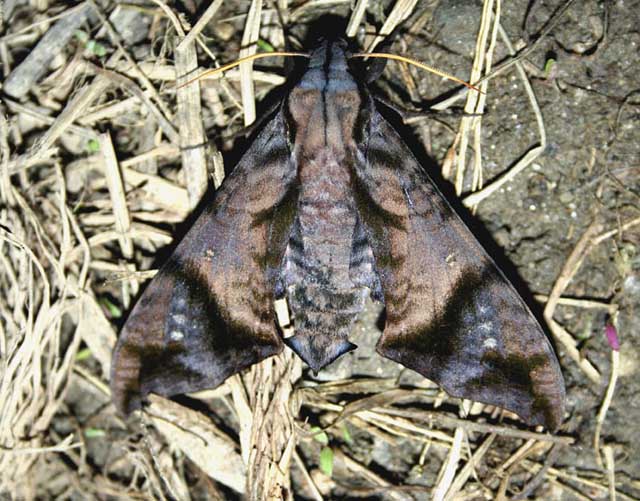
Nyceryx
hyposticta, Coviriali, Junin, Peru,
November 21, 2008, 662m, courtesy of Vladimir Izersky.
This site has been created by Bill Oehlke
Comments, suggestions and/or additional information are welcomed by Bill.
TAXONOMY:
Family: Sphingidae, Latreille, 1802
Subfamily: Macroglossinae, Harris, 1839
Tribe: Dilophonotini, Burmeister, 1878
Genus: Nyceryx Boisduval, [1875] ...........
Species: hyposticta R. Felder, 1874
|
DISTRIBUTION:
Nyceryx hyposticta (approximate wingspan: 95-104mm)
flies in Colombia, the specimen type locality, and in
Venezuela: Merida, Tachira, 0-2425m;
through
Ecuador: Pichincha; Junin: Coviriali; Zamora-Chinchipe: Tapichalaca (2000m PO); to
Peru: Junin (662m), Carabaya; Amazonas (BF);
Bolivia: Lapaz (750, 1200, 3200m), Cochabamba; and
Argentina: Salta, 700m (EB).
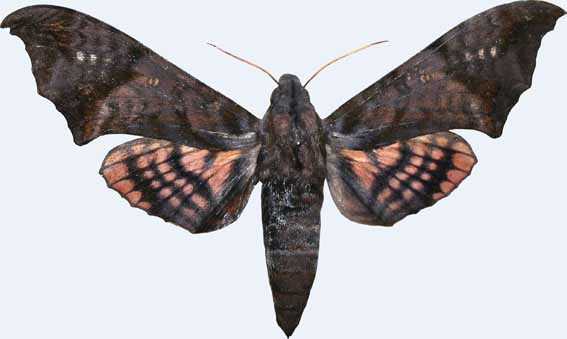
Nyceryx
hyposticta, Coviriali, Junin, Peru,
November 21, 2008, 662m, courtesy of Vladimir Izersky.
Brian Fletcher reports Nyceryx hyposticta from Abra Patricia Reserve, Amazonas, Peru,
October 10, 2009; 2000m.
The largest species of the genus, immediately distinguishable by the semitransparent spots in the distal half of the forewing and the pink
hindwing upperside with three transverse black bands.
Basal half of forewing underside with numerous conspicuous yellow spots.
Hindwing upperside ground colour pink, with three transverse black bands (similar to those found in Adhemarius gannascus and allied species). CATE
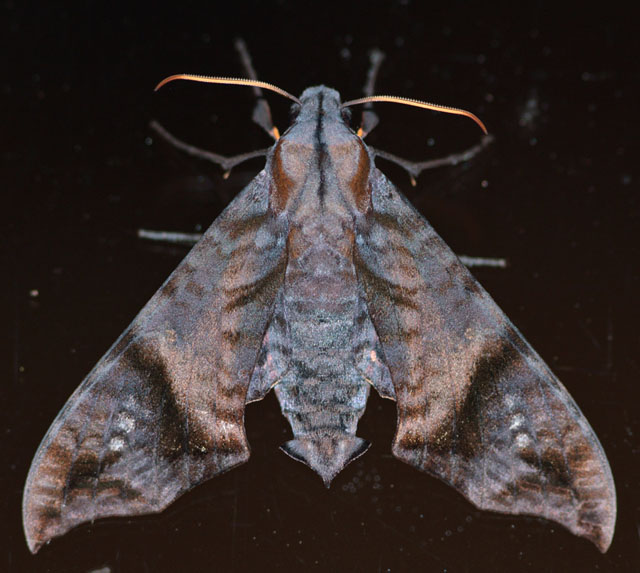
Nyceryx hyposticta, Casa Simpson/Tapichalaca, Zamora-Chinchipe, Ecuador,
February 20, 2011, 2000m, courtesy of Pia Oberg.
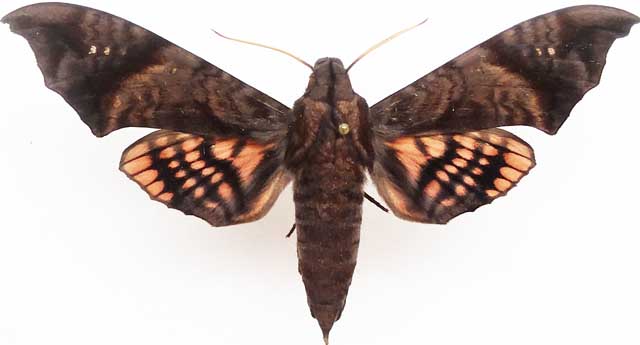
Nyceryx hyposticta, Pampa Hermosa Lodge, Junin, Peru,
95mmDecember, 2008, 4000ft, courtesy of Anna & Frank West..
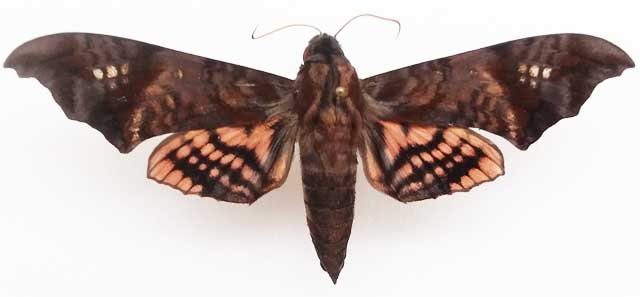
Nyceryx hyposticta, South of Leymebamba, Amazonas, Peru,
104mm, November, 2018, 10000ft, courtesy of Anna & Frank West..
FLIGHT TIMES:
Moths are probably on the wing in just about every month. They have been reported in Bolivia from February to May. Vladimir Izersky
reports a November flight in Peru.
Lief Gabrielsen reports an October flight in Pichincha, Ecuador, and Pia Oberg reports a February flight in Zamora-Chinchipe, Ecuador.
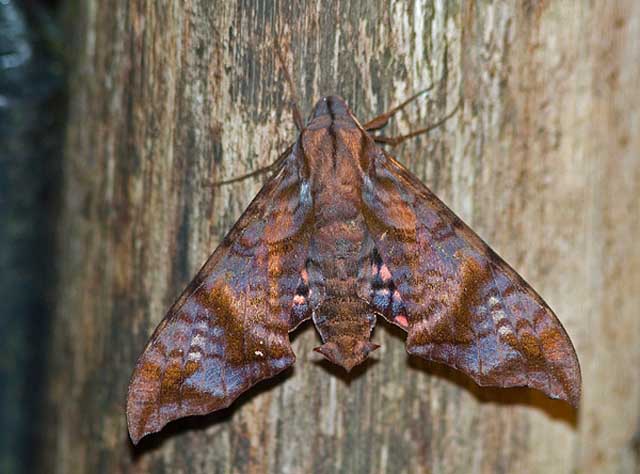
Nyceryx hyposticta,
Bella Vista Lodge, Pichincha, Ecuador,
October 19, 2009, courtesy of Leif Gabrielsen.
ECLOSION:
Adults eclose, usually within three weeks.
SCENTING AND MATING:
Females call in the males with a
pheromone released from a gland at the tip of the abdomen.
EGGS, LARVAE, PUPAE:
Larvae feed on ??
Return to Sphingidae Index
Return to Dilophonotini Tribe
Goto South American Index





